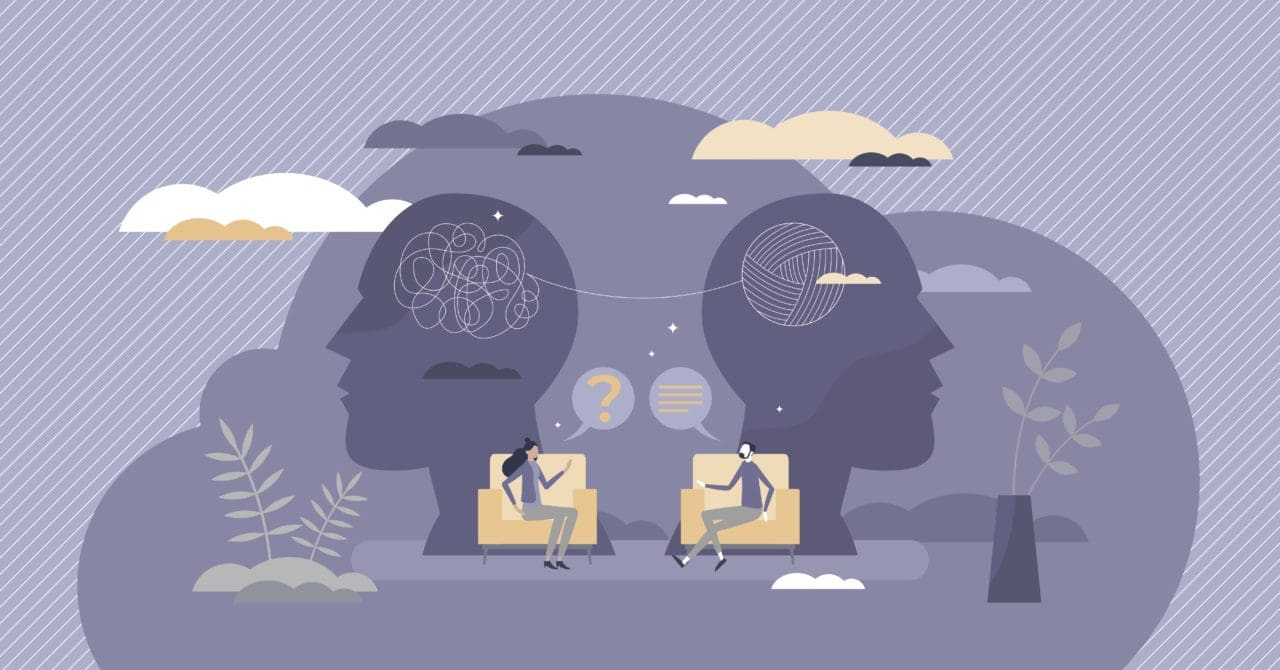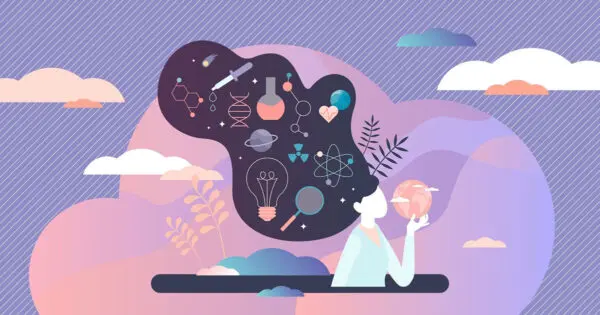An Overview of Ibogaine Research
Iboga root bark and ibogaine — a complex tryptamine — are both psychoactive and known for their intense dream-like states that occur after ingestion of high doses. In the Western world, ibogaine is most well known for eradicating withdrawal symptoms from opioids such as heroin.
Ibogaine was first isolated over 100 years ago, has a unique history, and has primarily been driven by an underground community of patients, advocates, and physicians worldwide. This article outlines current research and reviews the key players and events that brought this research into its current state.
Early Ibogaine Drug Development
In the late 1880s, French colonists in the Congo observed indigenous use of iboga. French researchers first extracted ibogaine hydrochloride in 1901. Pharmacologists studied ibogaine through the 1930s and eventually created a pharmaceutical called Lambarene. Lambarene today would be considered a microdose of ibogaine. Lambarene was withdrawn from the pharmaceutical market in 1966 after France declared ibogaine and the sale of ibogaine-containing products illegal.
Before ibogaine was made illegal in the United States, the CIA knew ibogaine impacted drug dependency. In 1957 Harris Isbell, a pharmacologist with a history of research in substance use and pharmacology was the Public Health Service director in a Hospital in Lexington, Kentucky. This institution housed criminally sentenced drug users who were often unwilling participants for the treatments given to them.
During at least part of his work in Lexington, Isbell was funded by the CIA and the classified MKUltra project, studying psychedelics’ effects on human subjects — including ibogaine, which was administered to opioid-dependent people sentenced to mandatory rehabilitation. (These accounts are told in greater detail in The Narcotics Farm and The Search for the “Manchurian Candidate).
Howard Lotsof, the ibogaine provider regarded as the pioneer and founder of ibogaine in the west, did not stumble upon this effect until 1962.
Early Ibogaine Psychiatric Research
Although prohibition drug laws have significantly impacted progress, we do have some pre-prohibition psychiatric studies using ibogaine.
The earliest and most significant research was conducted by world-renowned developer of The Enneagram of Personality theory and Chilean psychiatrist Claudio Naranjo. He presented some of his findings using ibogaine as an adjunct to psychotherapy in 1966 at an LSD Conference for the University of California. Here, Naranjo outlined his protocols and noted childhood and past memories’ tendency to surface in his patients. He also noted the emergence of embodiment and archetypal or mystical-type experiences during the peak of the ibogaine trip.
What Does the Research Say About Ibogaine?
Ibogaine research is broad, owing to the drug’s unique pharmacology. From neurological impacts and psychopharmacology, to antimicrobial properties against parasites, ibogaine is not your typical psychedelic. The complete research profile of ibogaine is too great to include here, but we will focus on addiction and the emerging clinical trials. For more insight on ibogaine analogs, read here.
Mechanism of Action and Pharmacokinetics
Many studies have investigated ibogaine, but the only constant found is that scientists still do not fully understand how ibogaine elicits the benefits observed in studies and anecdotal reports. So, what do we know?
We know that ibogaine works across numerous neurotransmitters and is working in many parts of the brain simultaneously. Possibly one of ibogaine’s most notable research findings is its ability to increase and modify levels of neurotrophic factors in the brain; specifically, Glial-cell Derived Neurotrophic Factor (GDNF), Brain-Derived Neurotrophic Factor (BDNF), and Nerve Growth Factor (NGF).
Ibogaine and Substance Use Disorder Research
Ibogaine has been shown to reduce drug-induced dopamine efflux in those with chronic substance use, resulting in reduced cravings, behaviors associated with drug-seeking, and periods of abstinence.
Perhaps, most impressive are studies that involve ibogaine treatment and short-acting opiates (such as heroin, oxycodone, morphine). Over and over again, these studies show that ibogaine can eliminate acute opiate withdrawal symptoms.
A study published on ibogaine and substance users analyzed data on 75 people treated with ibogaine for cocaine, crack cocaine, and alcohol use during a 30-day program that incorporated psychotherapy. 61% of people treated remained abstinent one year later. Individuals who chose to ingest more ibogaine at a different time in the future, instead of a single administration model, were more likely to remain abstinent for longer.
An analysis of the long-term outcomes of the 30-day program was later published. Several of the patients cited psychotherapy as being integral to their healing and integration of their ibogaine experience.
In one observational study that included a 12-month follow-up, even the patients who resumed opiate use claimed they had positive ibogaine experiences and received insight into their personal situation. Some depression symptoms were also alleviated.
Many people who experience substance use disorders have comorbidity with other mental health conditions. As part of addiction research studied with ibogaine, there have been some insights that point to ibogaine being beneficial for depression, PTSD, obsessive-compulsive behavior, and anxiety.
Ibogaine Might Help Mental Health Symptoms
There have been studies on ibogaine’s ability to increase and modify neurotrophins in the brain, particularly GDNF. In one study, patients reported the alleviation of many symptoms of depression following ibogaine treatment, as indicated by the Beck’s Depression Inventory.
The connection between serotonin and neurotrophins may further explain ibogaine’s correlation with a decrease in drug-seeking behavior and long-term depression. Low neurotrophin levels have been seen in alcohol, heroin, and cocaine-dependent people. The study also mentioned the possibility that the role ibogaine has with neurotrophins may be significant for neurodegenerative disorders such as Parkinson’s Disease.
Another neurotrophin, NGF, has been proposed as a treatment for some psychiatric conditions, including anorexia and bulimia, conditions seen by some providers who run ibogaine treatment centers. Additionally, in a study on mice, NGF instigated peripheral nerve regeneration — something anecdotally reported by providers and some clients, as well as noted in a patent application. Recent research has also revealed ibogaine may be a treatment option for peripheral neuropathy, which has been linked to depressive symptoms.
Ibogaine Can Be Toxic for the Heart
The cardiac system is significantly affected by ibogaine. Partially due to ibogaine’s effects on many neurotransmitters and the interaction with the central nervous system, a condition called bradycardia might develop. Ibogaine is also an hERG channel blocker, inhibiting potassium, calcium, and sodium ion channels, disrupting the heart’s electrical network.
Ibogaine prolongs the QT interval. The QT interval is measured on an ECG and refers to the length of time it takes the heart to recharge between beats. QT prolongation can lead to arrhythmias, syncope, seizures, as well as a ventricular arrhythmia called torsades de pointes — often fatal or leading to cardiac arrest.
In a new study with opioid-dependent people, half of the participants showed evidence of QT prolongation even 24 hours post ibogaine administration. This is breaking news for the ibogaine industry where providers often feel comfortable using larger flood doses. The study recommended that the cumulative, low, and repeated dosing protocol may be much safer for some individuals. (LINK TO NEW ERA OF IBOGAINE TREATMENT ARTICLE)
While not as common, QT irregularities may also cause seizures.
Ibogaine Has Antimicrobial Properties
Ibogaine has been found to have antimicrobial and anti-fungal properties when studied on mice and antimycobacterial properties on bacterial cultures. A study on human blood showed antiretroviral activity on HIV-1 infections.
Interestingly and a step away from the common substance use studies, a Phase 2 clinical trial has been announced with an ibogaine analog, 18-MC, and efficacy and safety in treating a skin infection called cutaneous leishmaniasis in humans.
The History of Clinical Ibogaine Research
Ibogaine has a long but complicated research history. And, the future of ibogaine clinical trials appears equally as complex — but ever more interesting. Throughout these studies, public health dialogues are often engaged by advocates and activists connected through an online network of discussion forums and mailing lists, originating in what researcher Kenneth Alper notes as a “medical subculture” that identifies with marginalized and stigmatized people.
Preclinical Ibogaine Research
After the passage of the CSA, ibogaine provider Howard Lotsof and others worked to legitimize ibogaine research. In 1982 Lotsof filed a patent, started a nonprofit, and commissioned a research review from the National Institute of Drug Abuse (NIDA). But, the review was not enough to inspire drug developers or researchers to get involved. Undeterred, by 1987 Lotsof founded a private company, filed additional patents to use ibogaine for many substance use conditions, and developed an international ibogaine conference in Paris.
Lotsof’s firm, NDA, operated in the Netherlands and partnered with Stanley Glick from Albany Medical College in 1989. In 1991, Glick presented the first animal trials of ibogaine and opioid dependence. Things looked promising, but a host of pharmaceutical industry interventions prevented clinical studies from moving forward, and NIDA decided to cut all funding for ibogaine in 1995.
Elsewhere, a range of studies was published investigating ibogaine’s effect on cocaine and opiate withdrawal, and the pharmacology of ibogaine on various neural receptors, while several studies were held across Europe.
Ibogaine and Clinical Trials
Clinical trials on ibogaine are extremely limited. The natural alkaloid cannot be patented itself, and a treatment that works with one or just a few treatments over time has not yet attracted goodwill investors.
The longest-running research on ibogaine comes from Deborah Mash’s lab at the University of Miami and her company with dozens of ibogaine research patents, DemeRx. Mash is a world-renowned ibogaine researcher who has been working in the field since 1992, operating a clinic out of St. Kitts in the Virgin Islands and is one of the most established neuroscience researchers working on psychedelic medicine.
Mash had completed multiple studies on ibogaine and produced some of the first studies investigating why ibogaine may treat dependence on opioids and stimulants. Among her findings are the use of noribogaine as a therapeutic drug, in its own right. Presently, Mash and her company DemeRx are preparing to start clinical studies to investigate the safety and effects of ibogaine on the human body.
Noribogaine has attracted the interest of other researchers as well. It is long-acting and has different mechanisms of action compared to its parent compound. In particular, it has more binding at the opioid receptors.
A 2016 study researched a novel treatment method of noribogaine administered in rodents during severe precipitated withdrawal from naloxone. Precipitated withdrawal can occur when overdoses are reversed with Narcan (naloxone) or when Suboxone is taken before all opiates have left the opioid receptors. It is a painful condition and there is no safe treatment option aside from waiting for the condition to subside.
Mash has noted that part of ibogaine’s ability to attenuate cravings and promote well-being for long periods of time after ibogaine may be due to the long-acting nature of noribogaine and it’s complex and lingering mechanism of action on the central nervous system.
Upcoming Clinical Trials Using Ibogaine
Studies on ibogaine have been nearly all limited to testing ibogaine and ibogaine’s components. While COVID-19 has delayed some research, there are some clinical trials with human participants and some that are ready for phase 2 studies:
- The research organization ICEERS, nonprofit MAPS, and several other collaborators in academia are sponsoring a clinical trial on efficacy and safety with ibogaine treatment for methadone detoxification in Spain.
- MAPS sponsored two observational studies on ibogaine and substance use efficacy, following up for 12 months after treatment. The studies showed 21% and 50% abstinence at a 12-month follow-up, respectively. However, over half of the participants who did choose to use drugs reported using fewer drugs, and many also reported less alcohol consumption and cravings.
- Pharmaceutical company MindCure launched a research program for studying psychedelic therapies focusing on ibogaine, ketamine, and psilocybin. MindCure plans to synthesize ibogaine and claims they have found a connection between ibogaine and the healing of traumatic brain injuries and peripheral neuropathy.
- The University of Sao Paolo has teamed up with ICEERS to launch their “Ibogaine in the Treatment of Alcoholism: a Randomized, Double-blind, Placebo-controlled, Escalating-dose, Phase 2 Trial”. Phase 2 is currently in the recruiting stage for participants but is postponed due to COVID-19. Phase 2 will be double-blind and placebo-controlled. The doses will be randomized and use an escalating dose methodology.
A final thought: Ibogaine research is a growing field, but clinical trials and research remain impacted by prohibitive drug policies that place ibogaine on Schedule I status, despite some U.S. cities decriminalizing iboga and ibogaine along with other plant medicines. The barriers to rescheduling are high. However, with enough anecdotal evidence and decades of study, providers and researchers might be able to work together to address the laws that prevent scientists, and patients, from investigating this therapeutic medicine. Additionally, further decriminalization may assist in addressing the stigma that comes from using psychedelics as medicines.








